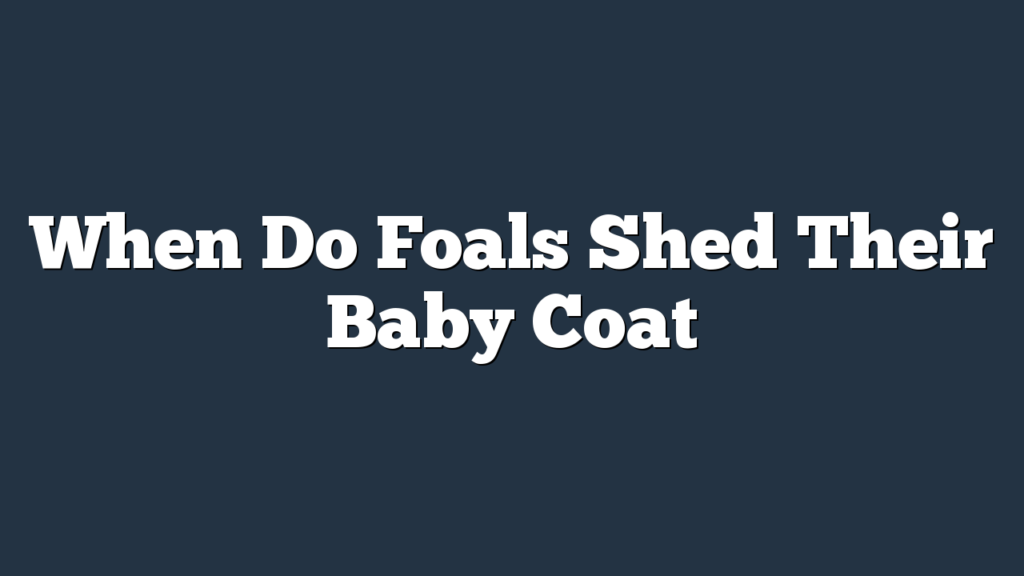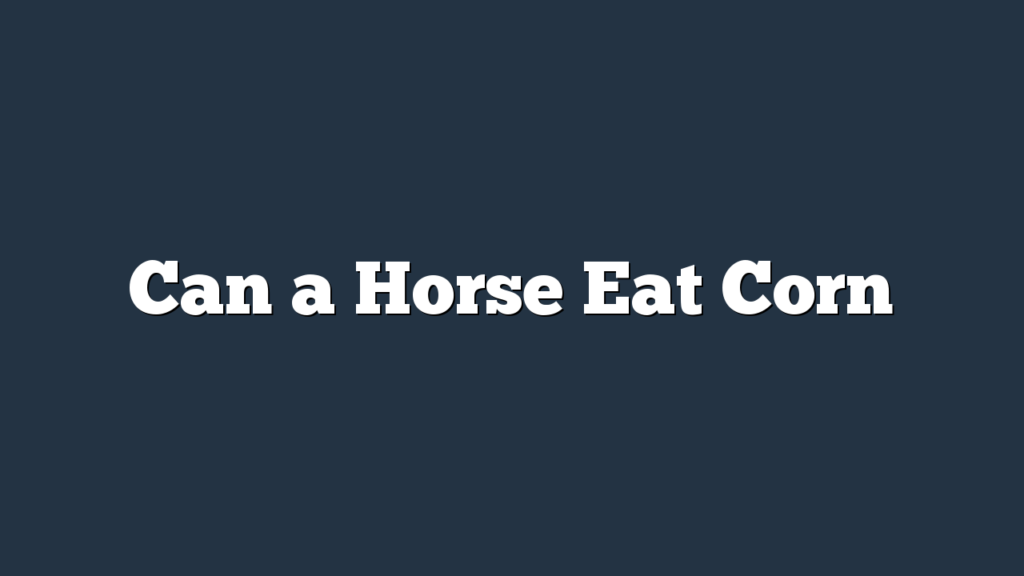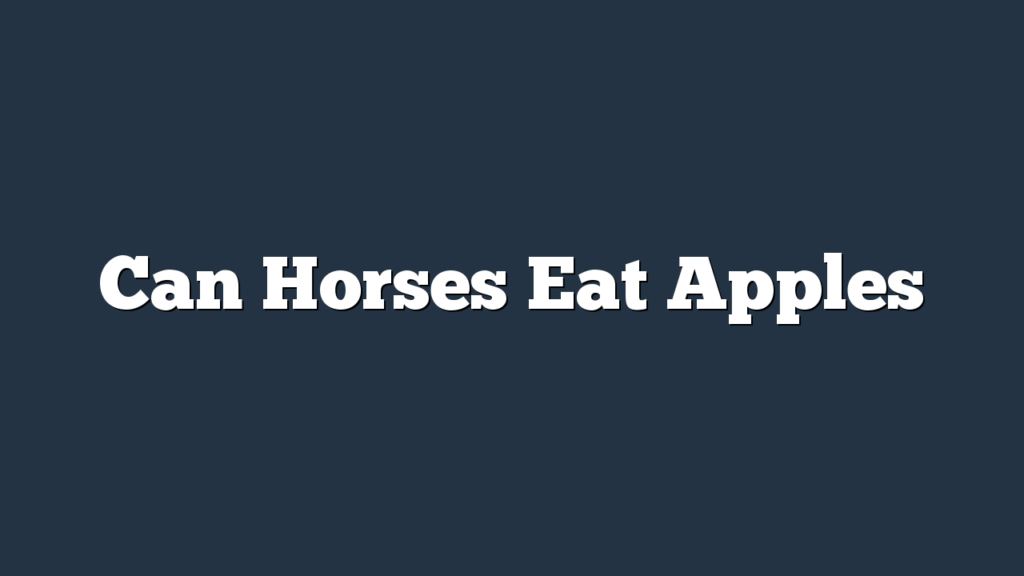Are you curious about when foals shed their baby coat? Well, you’re in the right place! In this article, we’ll explore the factors that influence foal coat shedding, the signs that indicate it’s about to begin, and the different stages of the shedding process.
We’ll also provide you with a timeline and some helpful tips to support your foal during this natural transformation. So, let’s dive in and learn all about foal coat shedding!
Factors Affecting Foal Coat Shedding
When caring for a foal, you can expect various factors to influence when they shed their baby coat. Factors affecting foal coat shedding include genetics, nutrition, environment, and overall health.
Genetics play a significant role in determining when a foal will shed its baby coat. Some breeds tend to shed earlier or later than others.
Nutrition is also essential for a healthy coat transition. Foals require a balanced diet with adequate protein, vitamins, and minerals to support proper hair growth. A deficiency in essential nutrients can delay shedding and result in a dull or patchy coat.
The environment is another factor that affects coat shedding. Foals exposed to prolonged sunlight or extreme temperatures may shed earlier to adapt to their surroundings.
Lastly, the overall health of the foal plays a vital role in coat shedding. Foals that are sick or stressed may experience delayed shedding. To promote a healthy coat transition, ensure your foal receives a nutritious diet, plenty of exercise, and a stress-free environment. Regular grooming, including brushing and bathing, can also help stimulate hair follicles and promote shedding.
Signs That Foal Coat Shedding Is About to Begin
Are you wondering when your foal will start shedding its baby coat? Look out for signs that shedding season is approaching.
Physical indicators such as loose, dull hair and the appearance of new, short hairs are sure signs that your foal’s coat shedding is about to begin.
Shedding Season Approaching
As the shedding season approaches, you’ll start noticing more frequent signs that your foal’s coat is about to begin shedding. Here are some key indicators that shedding season is just around the corner:
- Increased hair loss: You may notice more loose hairs on your foal’s body, especially around the neck, shoulders, and hindquarters. This is a clear sign that the coat is starting to shed.
- Dull and patchy coat: As the old hair starts to fall out, the new coat underneath may appear dull and patchy. Don’t worry, this is completely normal during the shedding process.
- Itching and rubbing: Foals may become more itchy during shedding season, leading them to rub against fences, posts, or stable walls. This is their way of relieving the discomfort caused by shedding.
- Excessive grooming: Foals may spend more time grooming themselves or their stablemates during shedding season. This helps to remove loose hair and stimulate the growth of the new coat.
During shedding season, it’s important to provide regular grooming to your foal. Brushing their coat with a soft brush or curry comb will help remove loose hair and promote a healthy, shiny coat.
Physical Signs Indicating Shedding?
You will start noticing more frequent signs that your foal’s coat is about to begin shedding as shedding season approaches.
There are several physical signs that can indicate that your foal is about to shed its baby coat. One of the most common physical signs is the appearance of fuzzy hairs around the eyes, muzzle, and ears. These fine hairs are an indication that the foal’s new coat is starting to push through.
Another physical sign is the presence of loose hairs on your foal’s body. You may notice small clumps of hair coming out easily when you groom your foal.
Additionally, timing indicators such as the lengthening daylight hours and warmer temperatures can also signal that shedding season is approaching.
Paying attention to these physical signs and timing indicators can help you prepare for the upcoming shedding season.
The First Stage of Foal Coat Shedding
During the first stage of foal coat shedding, your baby horse’s fuzzy coat will begin to loosen and fall out. This process is influenced by several factors that determine the optimal timing for shedding.
Here are four key factors that can affect when your foal will start shedding its baby coat:
- Age: Foals typically start shedding their baby coat at around 4 to 6 months of age. However, the exact timing can vary depending on the individual foal and its breed.
- Season: Foals often shed their baby coat in the spring or early summer, as the warmer weather triggers the shedding process. This allows them to develop a sleeker coat that’s better suited for the upcoming season.
- Nutrition: A well-balanced diet plays a crucial role in the shedding process. Providing your foal with the right nutrients, such as sufficient protein and essential vitamins and minerals, can promote healthy hair growth and facilitate the shedding of the baby coat.
- Genetics: The shedding pattern can also be influenced by the foal’s genetic makeup. Some breeds may shed their baby coat earlier or later than others, so it’s important to consider your foal’s breed when determining the optimal timing for shedding.
The Transition Phase: Foal Coat to Adult Coat
Now let’s talk about the transition phase from a foal coat to an adult coat.
During this time, you’ll notice changes in the shedding timeline and duration of your foal’s coat. Factors such as diet, genetics, and climate can all influence how quickly and smoothly this transition occurs.
Understanding these factors will help you ensure your foal’s coat develops into a healthy and shiny adult coat.
Shedding Timeline and Duration
As the foal grows older, it goes through a transition phase in which its baby coat gradually sheds and is replaced by its adult coat. This shedding timeline and duration can vary depending on several factors influencing shedding. Here are some important points to consider:
- Breed: Different horse breeds may have different shedding timelines. Some breeds may shed their baby coat earlier or later than others.
- Season: Shedding is influenced by the changing seasons. Foals tend to shed their baby coat in the spring as the weather warms up.
- Nutrition: Providing a balanced diet rich in essential nutrients can promote healthy coat growth and shedding.
- Grooming: Regular grooming helps remove loose hair and stimulate the shedding process. Use a soft brush or curry comb to gently remove the baby coat.
To care for the foal’s coat during shedding, ensure they have access to clean water, proper nutrition, and regular grooming. This will help their adult coat grow in healthy and shiny.
Factors Affecting Coat Transition
Factors that affect the transition from a foal coat to an adult coat include genetics, nutrition, and grooming. These factors can influence the color and quality of the coat as the foal grows.
The genetics of the foal play a significant role in determining the coat color and pattern. Certain genes can determine if a foal will have a solid color or a patterned coat.
Nutrition also plays a crucial role in the coat transition. A balanced diet that includes essential nutrients such as protein, vitamins, and minerals is important for the development of a healthy and shiny coat. Poor nutrition can result in a dull and lackluster coat.
Regular grooming is another factor that affects the coat transition. Regular brushing and grooming help to stimulate the hair follicles and promote healthy hair growth. Additionally, grooming helps to remove dirt and debris, ensuring a clean and well-maintained coat.
Timeline for Foal Coat Shedding
When will your foal begin shedding its baby coat? The timeline for foal coat shedding can vary depending on several factors, including breed, genetics, and environmental conditions. Here is a simplified timeline to give you an idea of when you can expect your foal to shed its baby coat:
- Foal coat color changes: Foals are born with a soft, fluffy coat that often differs in color from their adult coat. As they grow, their coat color may start to change, with lighter or darker areas appearing. This is a natural part of the shedding process and can be fascinating to observe.
- Shedding patterns in different horse breeds: Different horse breeds may have varying shedding patterns. Some breeds may shed their baby coat earlier than others, while some may take a bit longer. It’s important to remember that each foal is an individual and may follow its own shedding timeline.
- Environmental factors: Environmental conditions can also influence when a foal starts shedding. Warmer climates may trigger shedding earlier, while colder climates may delay the process. Additionally, exposure to sunlight can play a role in stimulating shedding.
- Age: Foals usually begin shedding their baby coat between 6 months to a year old. However, this can vary, and some foals may start shedding as early as 4 months, while others may take up to 18 months. Patience is key, as the shedding process is natural and will happen in due time.
Understanding the timeline for foal coat shedding can help you anticipate and prepare for the changes that your foal will go through. Remember to provide proper grooming and care during this transition period to ensure your foal’s coat remains healthy and beautiful.
Tips for Supporting Foal Coat Shedding Process
To support the foal coat shedding process, you can take specific steps to ensure a healthy transition. Foal coat care is essential during this time to promote the growth of a shiny and healthy adult coat. Regular grooming techniques can help facilitate the shedding process and keep your foal comfortable.
First, make sure to provide your foal with a balanced diet that includes essential nutrients for hair growth, such as biotin and omega-3 fatty acids. A well-rounded diet will support the development of a strong and lustrous adult coat.
Next, establish a regular grooming routine. Use a soft brush or curry comb to gently remove loose hairs and stimulate the skin to promote shedding. Avoid using harsh tools or excessive force, as this can irritate your foal’s sensitive skin.
Additionally, consider using specialized grooming products designed to support coat health, such as detanglers or shine sprays. These products can help keep the coat clean, smooth, and free from tangles, making the shedding process more comfortable for your foal.
Lastly, monitor your foal’s overall health and address any underlying issues promptly. Certain medical conditions or nutritional deficiencies can affect the shedding process. If you notice any abnormalities or concerns, consult with your veterinarian for appropriate care and guidance.
Frequently Asked Questions
Can I Speed up the Foal’s Coat Shedding Process?
You can’t speed up the foal’s coat shedding process. It’s a natural process that takes time. Just be patient and let nature take its course.
How Long Does It Take for a Foal to Completely Shed Its Baby Coat?
To care for a foal’s coat during shedding, make sure to groom regularly and provide a balanced diet. Signs of a healthy shedding process include a shiny new coat and minimal hair loss.
Are There Any Specific Dietary Requirements to Support Foal Coat Shedding?
To support foal coat shedding, you can incorporate dietary supplements and grooming techniques. These methods can help promote a healthy coat and facilitate the shedding process.
Can I Groom My Foal During the Shedding Process?
During the shedding process, you can groom your foal to help remove loose hair and promote a healthy coat. Regular grooming techniques, such as brushing and currying, can improve blood circulation and bring out the natural shine in their new coat.
Are There Any Potential Health Issues Associated With Foal Coat Shedding?
During the shedding process, potential skin irritations and impact on temperature regulation are potential health issues to watch for in your foal. Keep an eye out for any signs of discomfort or abnormal behavior.
Conclusion
So, if you’re wondering when foals shed their baby coat, it typically begins around 6 to 8 months of age.
Signs that shedding is about to start include the appearance of patches of longer hair.
The shedding process goes through a transition phase where the foal coat is replaced by the adult coat.
This shedding timeline can vary slightly depending on individual factors.
To support the shedding process, make sure to provide proper nutrition and grooming for your foal.



